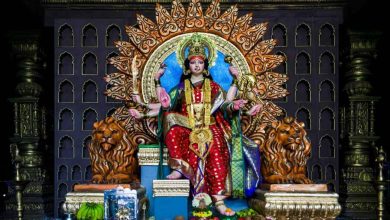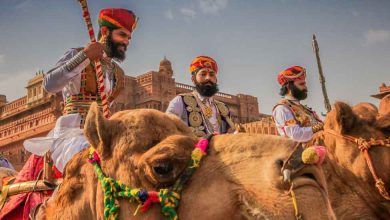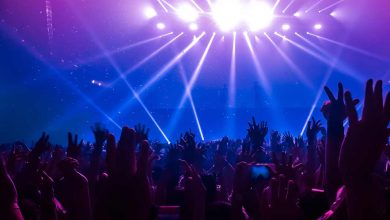As Siddharth Katragadda, a famous writer of Indian origin puts it “The greatness of a culture can be found in its religious festival”, so, the greatness of a country like India can be examined by sparing a glance at the vivid and vivacious list of religious and national festivals in India. Such diverse cultures, culminating in such varied festivals and that too under the name of a single country; such is the greatness of Indian culture.
The wide spectrum of religions, occupations, and faiths in the country is the prime cause of such diversification. Every religious festival is celebrated with sheer enthusiasm and devotion in this splendid land.
Religious and national festivals are of great importance in India. This is when you can see people of different backgrounds and social statuses come together to enjoy a day in unity and harmony. Not 5 religious festivals or even 10 religious festivals in India, but there are more than 1000 festivals celebrated every year among different communities.
Most Famous Religious Festival in India
Here’s a list of the most famous festivals that fill an Indians’ lives with joy and merriment.
1. Diwali
Diwali is celebrated through the varied cultures of the country with vibrancy and enthusiasm, irrespective of religions, communities and societies. It is the most spectacular religious festival in India.

Autumn marks the arrival of this festival and the preparation for the same begins much in advance with people decorating their houses and exchanging gifts. Diwali, the festival of lights, this day is celebrated by decorating the houses with lights, clay lamps, and candles.
2. Holi
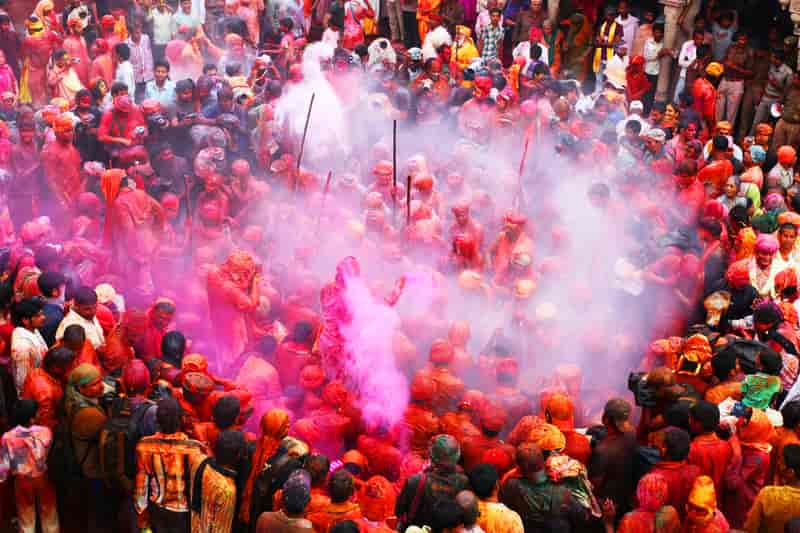
The arrival of spring in India is marked with the revellers covered in bright-coloured powder as they celebrate Holi. Usually falling in March, the religious festival of Holi brings with it the celebrations where the merrymakers wish each other Happy Holi by applying ‘gulal’ or coloured powder on each other’s cheeks. Savouries, dance, music, and food are the other highlights of this day. Holi is considered to be one of the most important festivities among the famous 10 religious festivals in India.
3. Dussehra
This festival marks the end of the nine-day-long festival of Naravratras. The day is commemorated as the day Lord Ram attained victory over Ravana, and therefore, this festival symbolizes the victory of good over evil.
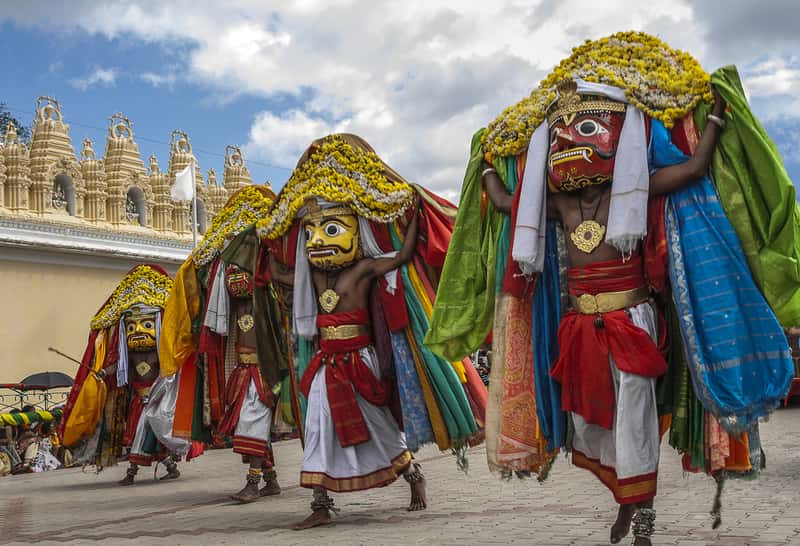
There are many different ways in which people celebrate Dussehra religious festival in India. As a celebration, the symbolic statues of Ravana and his brothers Meghnath and Kumbhkaran, are built and placed at different avenues to be burnt by an arrow of fire.
4. Ramadan/ Eid –Ul-Fitr
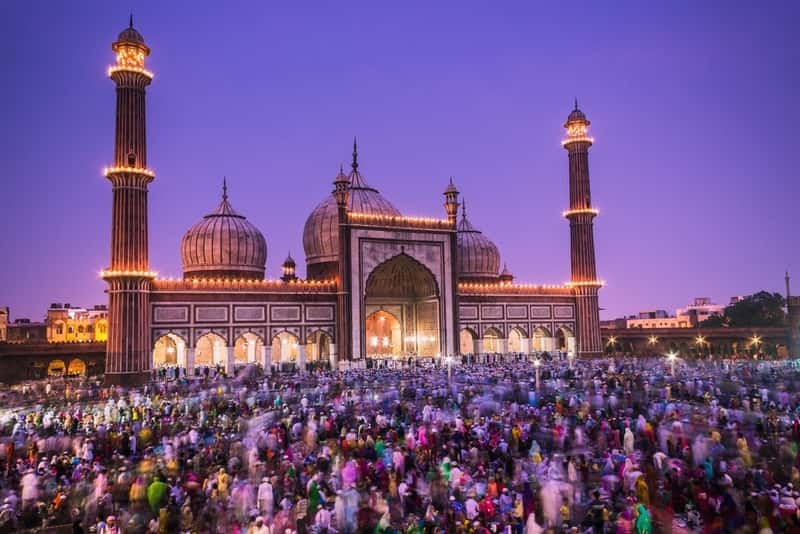
Eid-Ul-Fitr is celebrated mainly by the Muslim sect of the Indian demographic. It is the main festival among the 5 religious festivals that Muslims celebrate with fervour in India. Ramadan is the holiest month of the Islamic calendar and is used as the period for fasting, prayers, introspection and religious contemplation. The end of Ramadan is celebrated with a three-day festival of Eid-Ul-Fitr, where Muslims break their fasts by gathering together for prayers and celebration.
5. Christmas

Christmas is celebrated on the 25th of December each year. It commemorates the birth of Jesus Christ. This is the time when Christians offer prayers at churches, share goodies with each other, visit extended families and also share their happiness with other communities around them. Christmas is a religious festival that serves as a symbol of love, joy and togetherness. It is the time of the year reserved for gratitude and good thoughts. It is usually celebrated by decorating the Christmas tree and exchanging gifts with loved ones. You will see people in major cities like Shillong, Pondicherry and Goa decorating their streets, and neighbourhoods, and they also bake delicious cookies and cakes!
If you are planning to visit Shillong, where Christmas celebrations are at their finest, book your affordable stay in Shillong.
Check out the best hotels in Shillong
6. Ganesh Chaturthi
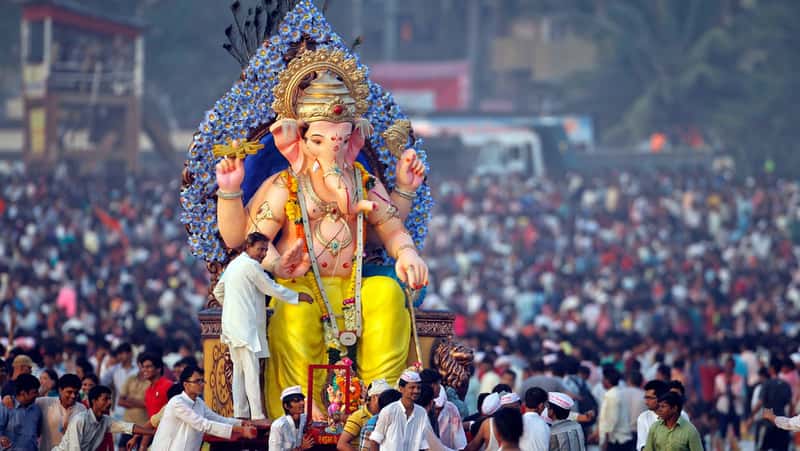
Celebrated with much fervour and excitement, the religious festival of Ganesh Chaturthi is the homecoming of Lord Ganesh. One of the most colourful and exciting 10-day-long celebrations of the Ganesh Chaturthi is initiated by installing the idol of Lord Ganesh at home to bless the house and its members with happiness and prosperity. At the end of the ten days, this idol is taken from homes with much pomp, toward a water body and then immersed with respect and gratitude.
7. Durga Pooja
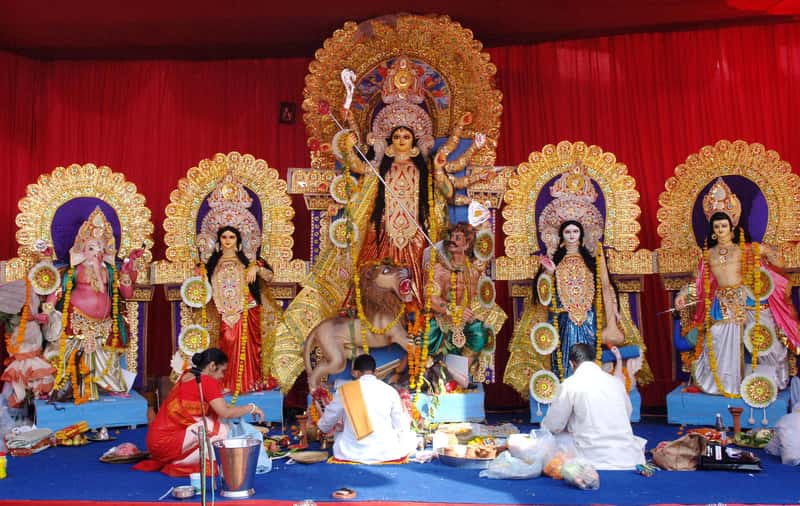
What is a religious festival but a day of immense joy and spiritual awakening? Durga Pooja is nothing less than a five-day-long carnival in Bengal with religious associations. Held in honour of Goddess Durga, this puja witnesses exuberant preparations for months in advance. The setting of decorative pandals and preparing for various cultural activities are a part of this festival. Think of this as the time when the kids in the house become event managers who will arrange everything – including the decoration props to the music systems! This is Bengal’s way of introducing children to the Durga Pooja as early as possible and they aim to teach young minds what is a religious festival, its historic significance and its rituals.
8. Baishakhi
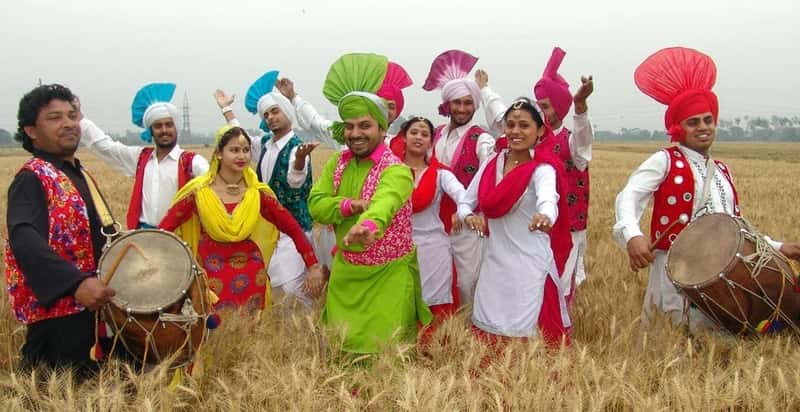
One of the major festivals of the Sikhs is Baisakhi. This religious festival is celebrated on the 13th of April each year. This is among the most revered 10 religious festivals in India and marks the harvest of Rabi crops and therefore, is reveled heartily among the farming community of Punjab. Celebrated by performing traditional folk dances of the state, this festival has a great religious significance too. It is people’s way of thanking Mother Nature for bestowing them with food and nutrition.
Check Out the Best Places to Visit in India for the Baisakhi Festival
9. Easter

This festival marks Jesus Christ’s resurrection from the dead and is among the most important festivals for Christians. Celebrated on the first Sunday between March 22 and April 25 every year, this festival is revelled with inexplicable enthusiasm, so much so, that this religious festival is celebrated throughout the preceding week of the festival day itself. Easter eggs, bunnies, baskets and candy are a standard part of this event.
10. Onam
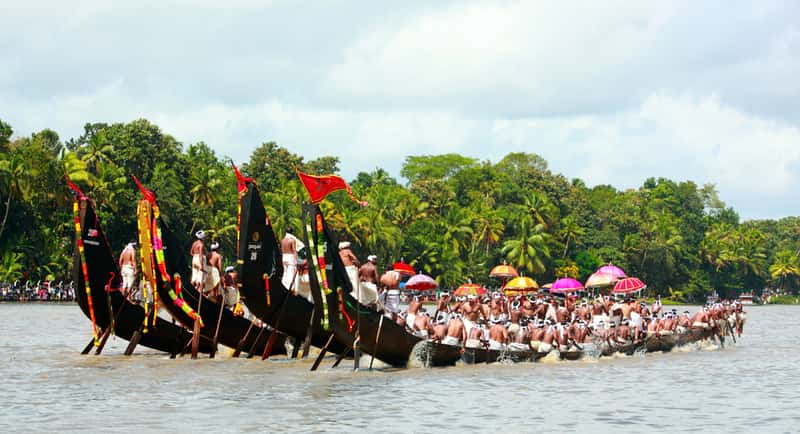
The biggest event of the state of Kerala, Onam is a harvest festival that is celebrated all across the state by people of all communities. It is believed to be the initiation of the Malayalam calendar. This religious festival falls between August and September. The festival extravaganza lasts from 4-10 days and elaborate feasts, folk songs, elegant dances, energetic games, elephants, boats, and flowers, all are a part of this dynamic festival.
You should keep your eyes open for the famous Kerala snake boat races! During the major religious and national festivals, the people of Kerala engage in boat races that not only promote impressive teamwork but winners will be revered as champions and warriors for the entire year! It is a matter of pride.
Read more about : Kerala Boat Race
11. Raksha Bandhan and Bhai Dooj
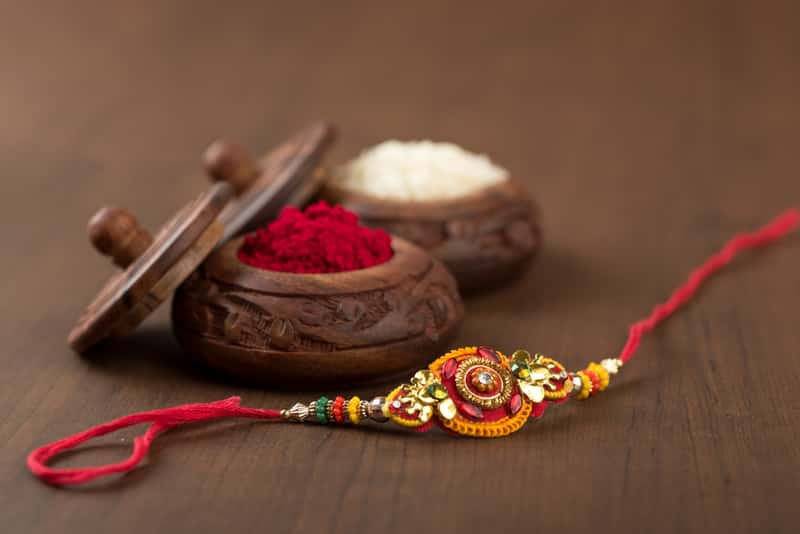
Celebrated to cherish the bond between brothers and sisters, this festival is among the most important religious and national festivals of India. Celebrated by applying saffron tilak on the brother’s forehead and tying a rakhi on his wrist, this festival holds impeccable importance for Indian brothers and sisters. It is a brother’s promise to his sister that he will always safeguard her and push her toward being prosperous and happy.
12. Budh Poornima
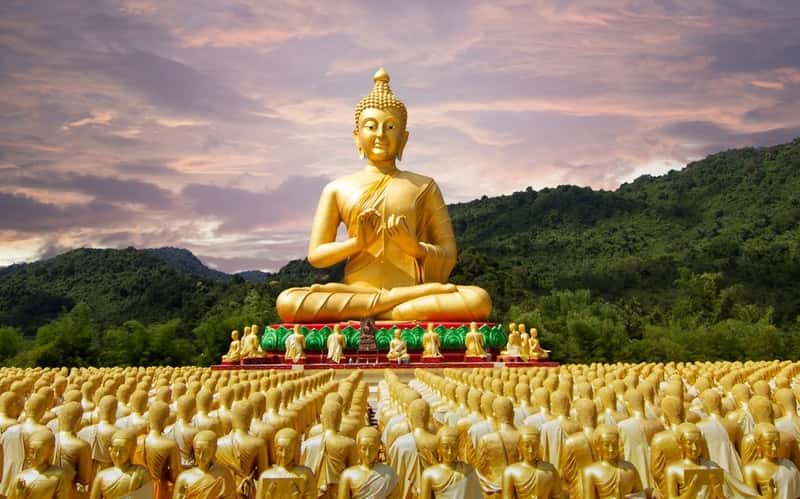
Celebrated by the devotees of Gautam Buddha, this religious festival commemorates his birthday. The festival falls in the Hindu month of Vaisakha on the day of the full moon. People celebrate this day by preaching and discussing the life and teachings of Lord Buddha. On this positive day, people worship decorated idols of Lord Buddha, eat simple vegetarian food, meditate and chant the name of Buddha and his disciples.
13. Krishan Janamashtmi
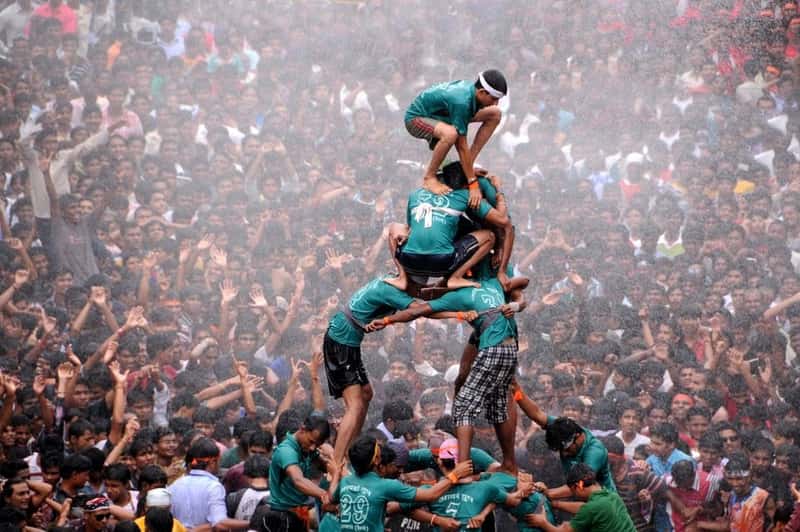
The legend of Lord Krishna’s birth and his triumph over evil is celebrated on this beautiful day. On this pious occasion, devotees throng temples to offer their prayers and bhog to their beloved deity. This religious festival in India is celebrated by almost all Hindus and you will see men and women trying to break the ‘matka’ or earthen pot, just like Lord Krishna used to do to steal the delicious ‘Makhan’ (butter).
14. Pongal
Pongal is the four-day-long harvest festival celebrated in Tamil Nadu. The festival is celebrated as a thanksgiving to nature. Falling typically on the 14th or the 15th of January, this festival has different rituals for each of the four days. One of the famous festivals of India, it is celebrated with a lot of enthusiasm and happiness.
Explore more about Pongal, Sankranthi, Lohri and Uttarayan: Greet the Season of the Harvest Festival
15. Maha Shivratri
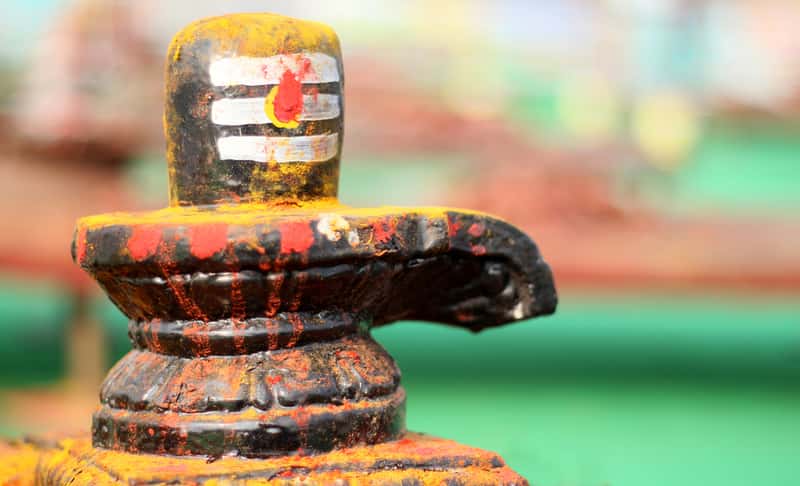
This festival is an annual event in honour of the great Lord Shiva. The festival is celebrated on the 13th night or 14th day of the lunar month Maagha or Phalguna. The celebration of the festival includes keeping day-long and night-long fasts by devotees, performing rituals and offering prayers to the traditional Mahashivaling.
16. Bihu
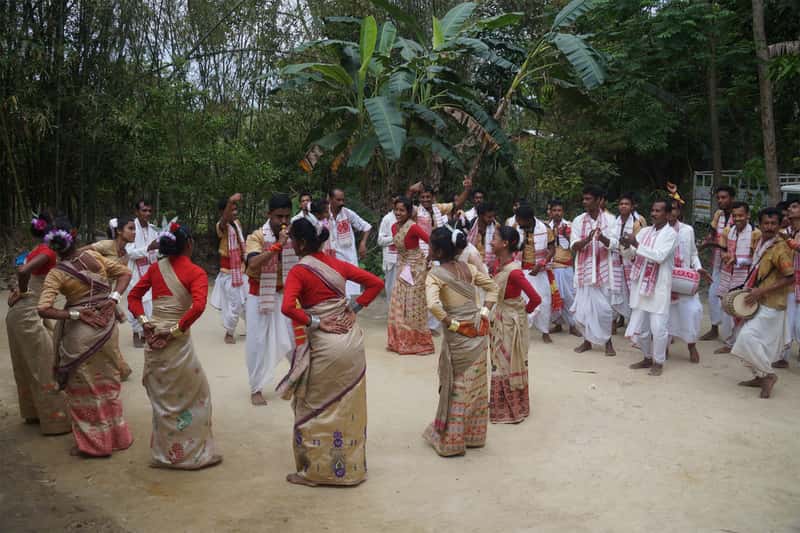
Bohag Bihu is one of the most important festivals of Assam. Beginning on the 14th of April, this festival is observed for seven days. Though the festival is only a week long, the celebration extends for a month. This festival has several rituals which are different for each of the days of celebration. Bihu dance is the speciality of this festival and is performed in different parts of the state on a regular basis for a complete month.
17. Chhath Pooja
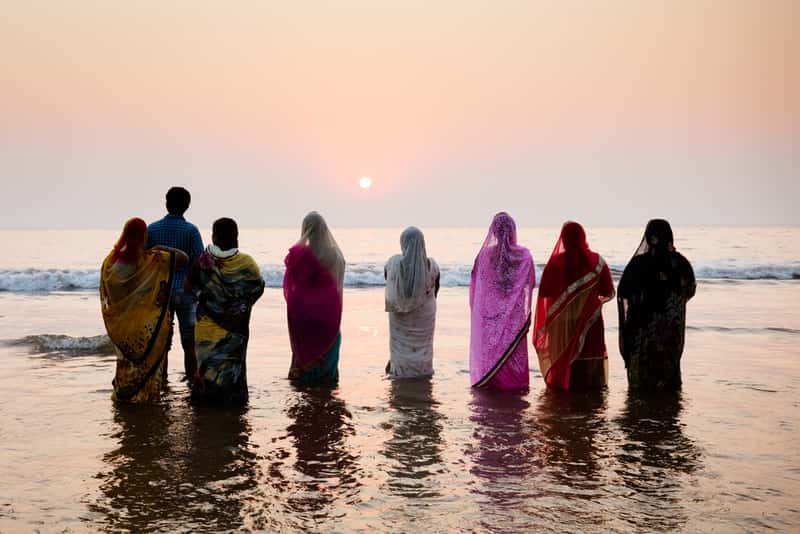
This festival is celebrated in the devotion of the Sun God.The puja is observed to thank Sun God for his protection and to seek blessings from him for good health and happiness. Celebrated mainly in Bihar and Uttar Pradesh, this festival is now gaining national recognition too.
18. Makar Sankranti
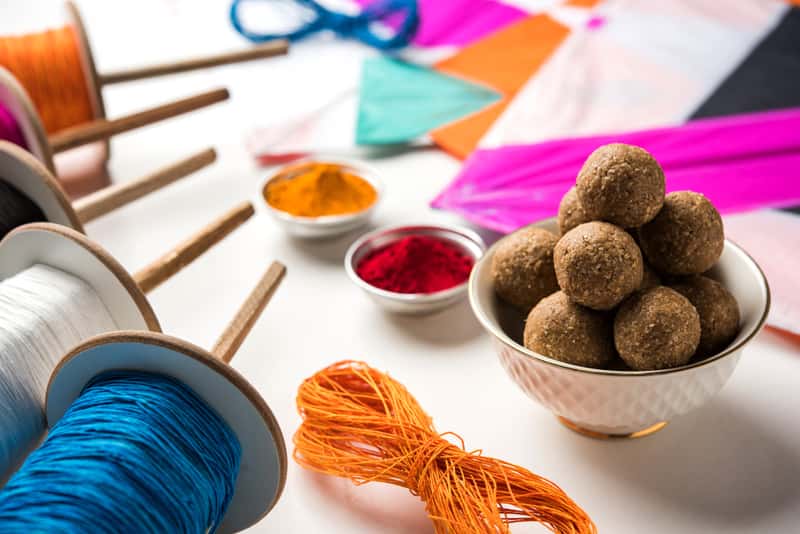
Celebrated in the month of January each year, this festival is one of the oldest traditions in India. This religiously significant day is celebrated in almost all states of India, though you will see people calling it by different names. If it is ‘Sankranti’ in Tamil Nadu, it becomes ‘Uttarayan’ in Gujarat. But the rituals and beliefs behind the religious festival are more or less the same. It marks the end of an inauspicious period and the start of the auspicious month.
19. Hemis
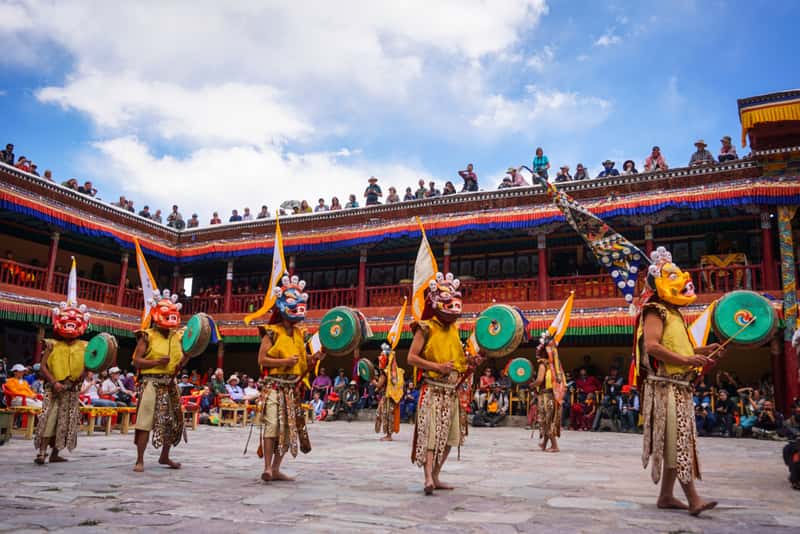
One of the biggest and prime festivals of Leh-Ladakh, the Hemis festival marks the birth anniversary of Ladakhi spiritual leader Padmasambhava. Culminating on the tenth day of the Tibetan lunar month, this festival is carried on for two days. Masked dance performers and traditional Buddhist rituals are the highlights of the festival. This is the best time to visit the monasteries in the region and engage in cultural walks across the villages.
20. Losar festival
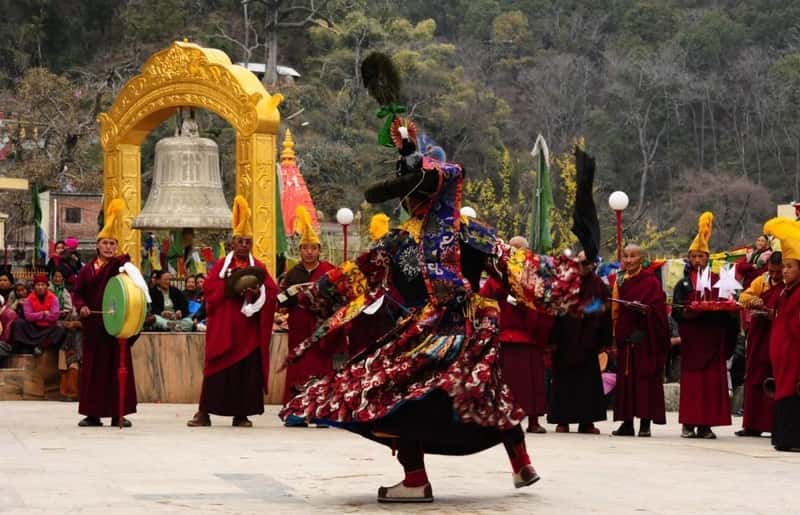
One of the major festivals of the state of Arunachal Pradesh, this three-day-long religious festival is celebrated with sheer pomp and show. The festival has distinguished and defined rituals for each of the three days. The merriment is enhanced by visiting friends and tying colourful flags on rooftops. Though the festival is for three days, the merrymaking can continue for up to 15 days.
21. Hornbill festival
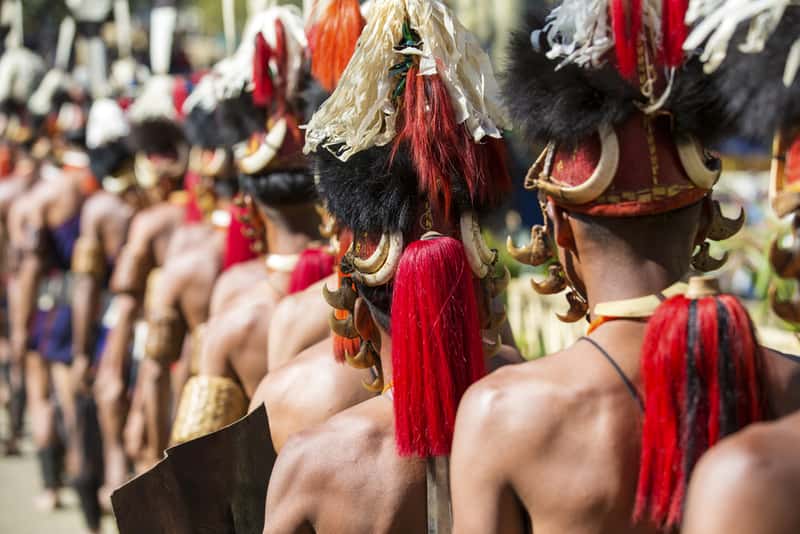
The 7-10 day festival is celebrated from the 1st of December each year and bears witness to all the major tribes of Nagaland. Exquisite costumes, colourful headgear, soulful war cries and warrior log drums are the highlight of this festival. One of the religious festivals of India, it is celebrated with great enthusiasm.
22. Lohri
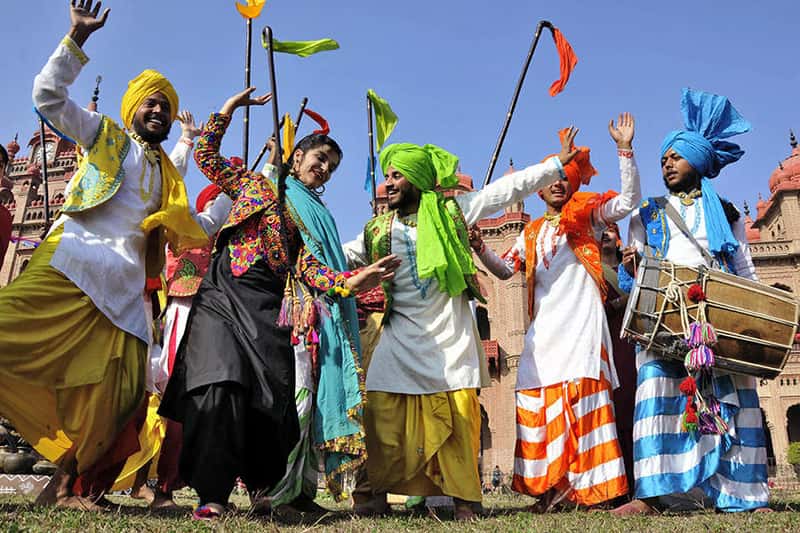
A truly Punjabi folk festival, Lohri is celebrated primarily by the Sikhs and Hindus of the Punjab region or origin. Having a trail of legends behind it, this festival is primarily a thanksgiving day for farmers, where the harvest of the Rabi crop is celebrated. The main celebration of the festival involves lighting a bonfire and throwing in foods like gajak, chikki, puffed rice, popcorn and sugarcane in it, to pay homage to roots.
23. Karwachauth
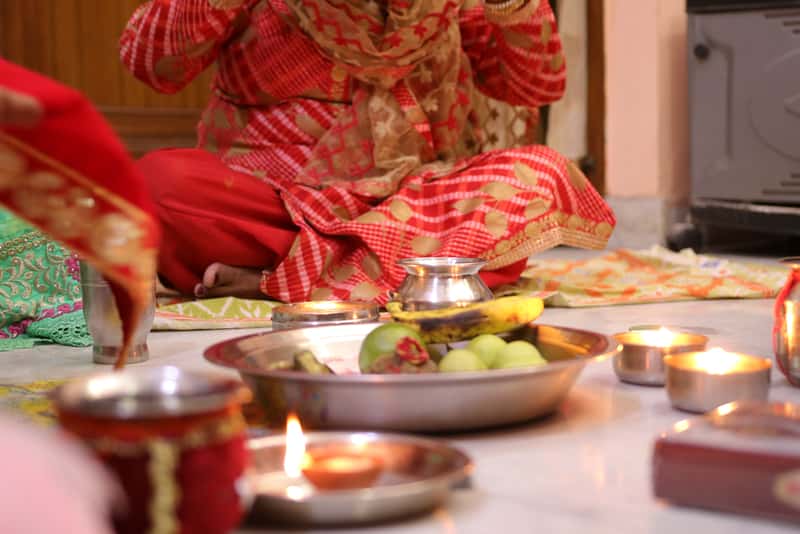
This festival is celebrated by the women of North India for the safety and long life of their husbands. As a celebration of this festival, women dress up, apply henna on their hands and fast from sunrise to moonrise. The festival is a full-day event with a plethora of vivid rituals. Well, these days you also see men fasting and praying during the religious festival for the prosperity and good health of their dear wives.
24. Navratri
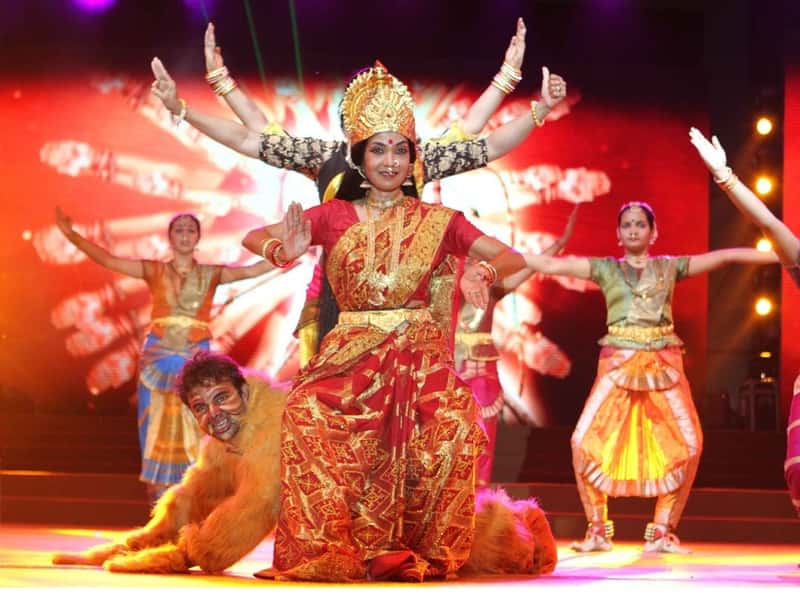
The nine-day-long festival culminates in the lunar month of Ashwin. Considered to be one of the most important festivals of Hindus, this festival is celebrated with extensive grandeur. Sharad Navratri marks the start of the festive season in India. This is when people celebrate the immense power and knowledge of Goddess Durga and hail her for her fearless stance against evil.
25. Teej
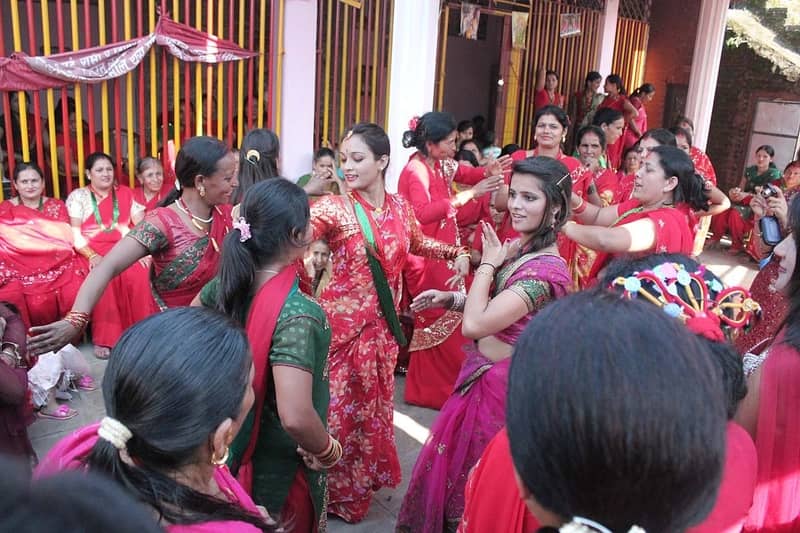
Celebrated to seek blessings for a happy married life from Lord Shiva and Goddess Parvati, this festival holds considerable significance for Hindus. Celebrated in different parts of the country, this festival is celebrated to commemorate the day on which Lord Shiva accepted Goddess Parvati’s love. As a ritual for this festival, women married and unmarried fast and worship clay idols of Lord Shiva and Goddess Parvati. Dressing up impeccably is also a part of this festival.
26. Ram Navami
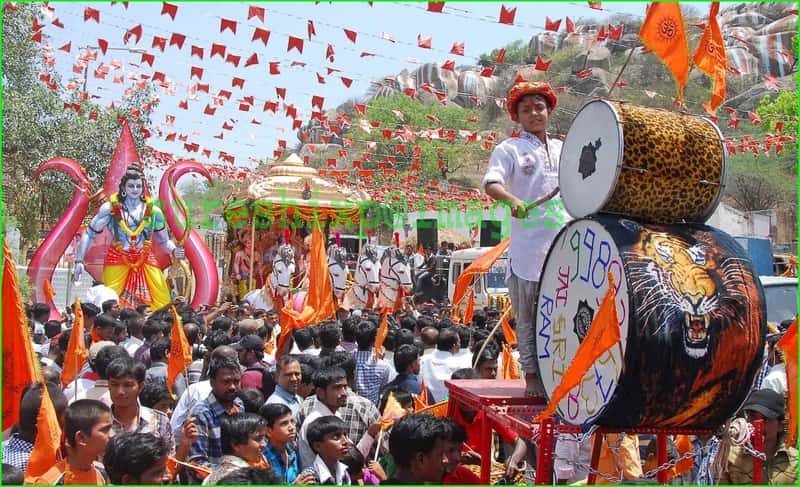
This festival celebrates the birth of Lord Ram and falls on the ninth day of the Hindu lunar year. Ram Navami usually falls in the month of March or April. Among the national festivals of India, this festival is celebrated with devotion and enthusiasm by Hindus.
27. Saga Dawa
One of the religious festivals of India, Saga Dawa is a major festival of Buddhists and is celebrated between May and June.
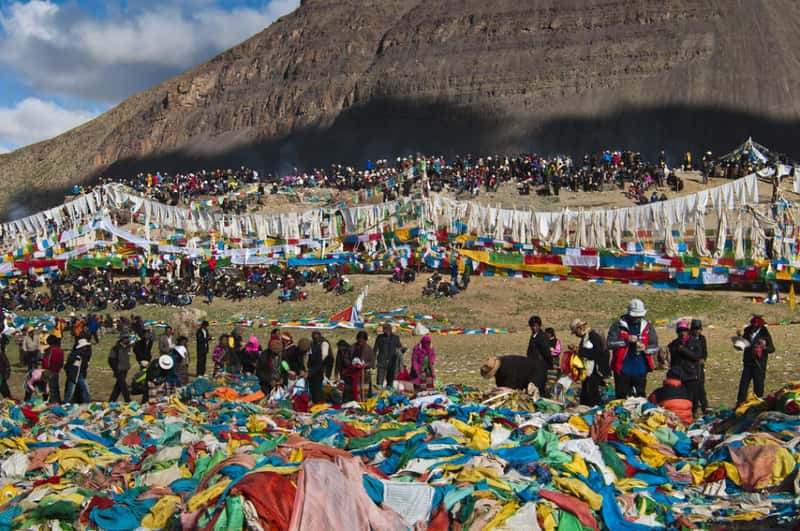
Commemorating the enlightenment of Lord Buddha, this festival is celebrated in Sikkim by offering water, incense sticks, and dhog at the Buddhist monasteries. The chanting of mantras and turning of the prayer wheels are the other rituals of this event.
28. Dree Festival
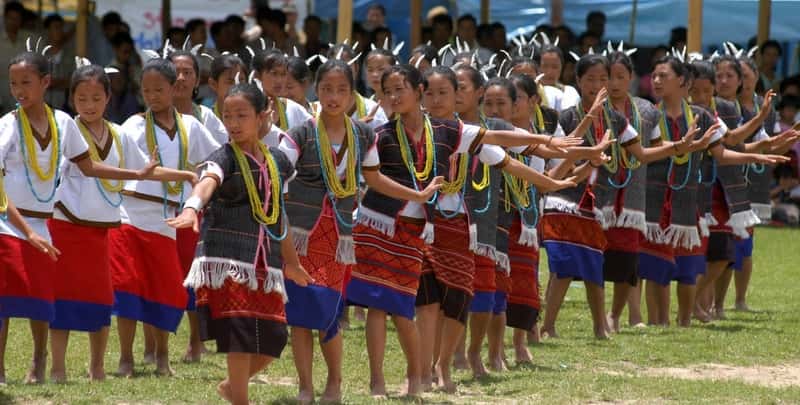
Taking place on the 5th of July each year, this festival is the biggest festival of the Ziro valley and is celebrated to ensure a good harvest. The traditions of this festival include distribution of cucumber to everyone, as a symbol of good harvest. Other facets of the celebration include offering prayers to four gods, brewing and drinking of wine and savoring various local dishes.
29. Moatsu Mong
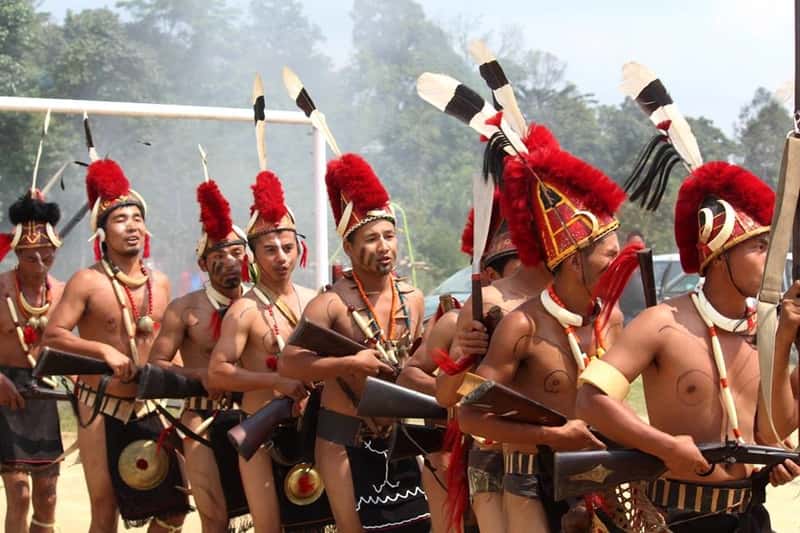
Again an agricultural festival of the northeast, Moatsu Mong festival is celebrated by the AO tribe of Nagaland to celebrate the completion of the sowing season. Cultural programs, cleaning of wells, brewing of beer and preparation of local savories are some of the highlights of the festival.
30. Lui-Ngai-Ni
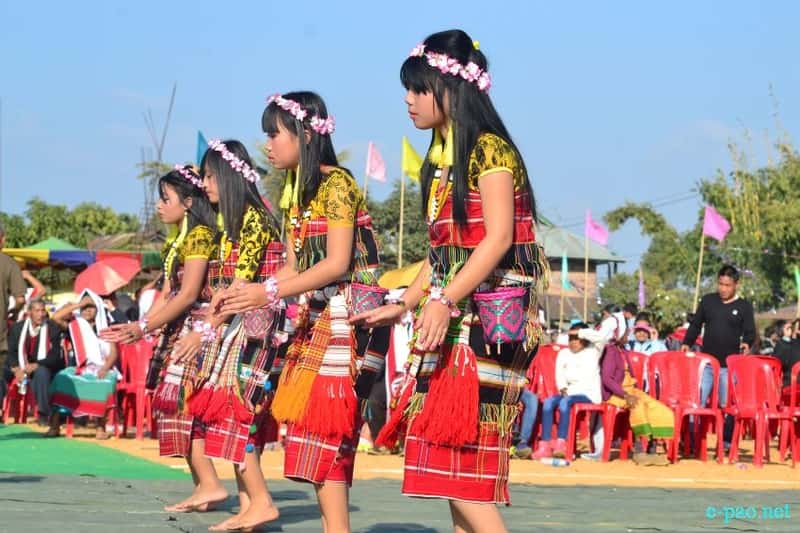
This festival marks the seed sowing season in Northeast India each year. Taking place on 15th of February each year, this festival is celebrated with the preparation of various delicacies, the performance of traditional dances and rituals of lighting fire to bless the seeds that are been sown.
31. Gangaur
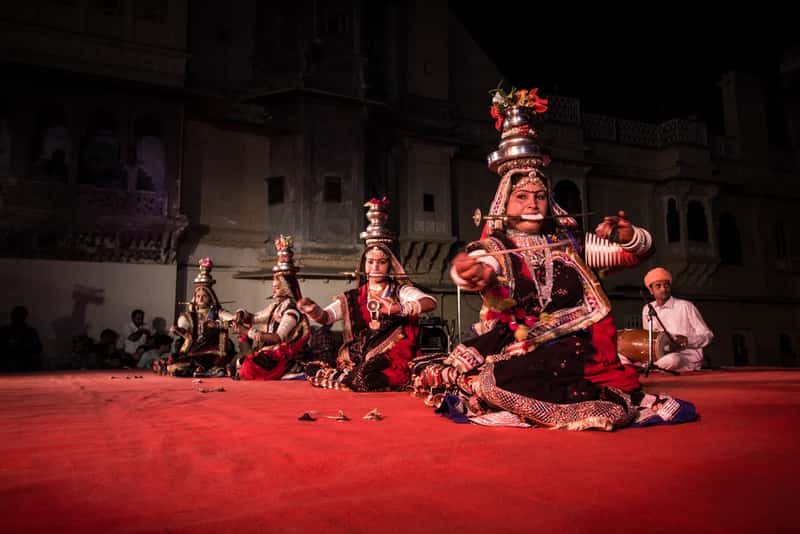
One of the most important festivals of the state of Rajasthan, Gangaur is celebrated each year in the lunar month of the Chaitra (March-April). This festival celebrates the heavenly union of Lord Shiva and Goddess Parvati and is considered a symbol of marital happiness. In this festival, which is especially celebrated by women, clay idols of Lord Shiva and Goddess Parvati are worshipped and immersed in water on the last day of the festival. Celebrated with great fervour, processions, and decorations, this festival is among the famous festivals of India.
32. Losoong festival
This festival is celebrated each year in the month of December, to bring in the Sikkimese new year. Also a symbol of celebration for the year’s harvest, this festival is mostly celebrated by the Bhutia tribe and the Lepchas. The celebration of this festival includes folk dance performances, archery competitions, and drinking of locally brewed wine.
33. Mahavir Jayanti
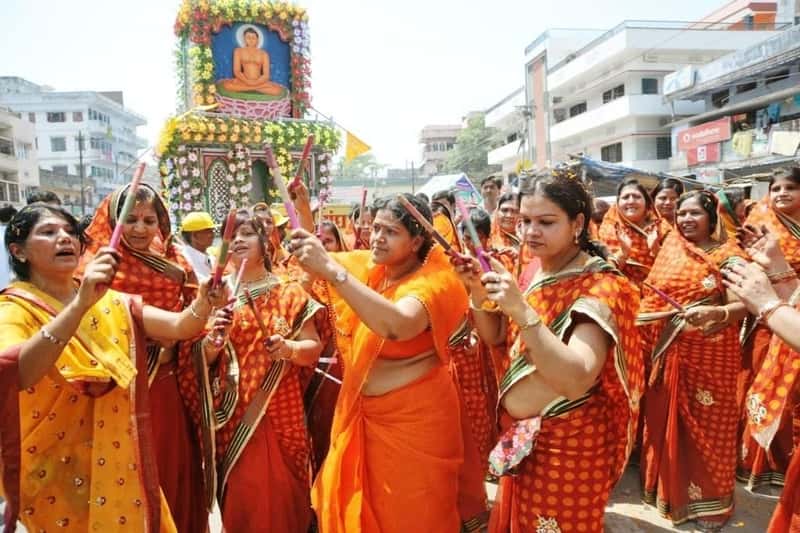
The religious festival is celebrated to commemorate the birth of Lord Mahavir. This is one of the main festivals of the Jain community. Celebrated with great fervour and devotion, this festival falls during the period of March-April. Processions, joint chanting of prayers and giving alms to the poor are some of the highlights of this festival.
The Indian belief system is much deeper than the apparent picture of gaiety (though that is something not to be missed) and to truly understand the depth of such greatness, one should understand the exquisite Indian culture. The ideal way to do that is to witness these astounding religious festivals first-hand, which portray the real essence and depth of the Indian belief systems. The spellbinding effect that a religious festival of India has is truly something to be experienced and shared.
